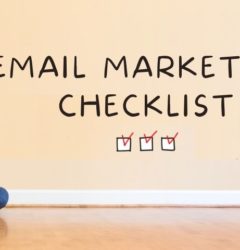
Do you monitor your email list? If so, how many subscribers have not opened your emails in the last 3-6 months? Email list hygiene is important, so in this blog post, we’ll share a few different ways to use email marketing to re-engage your inactive customers.
Can inactive email subscribers hurt your business?
Having a large email list looks good on paper, right?
Say you’ve got 1,000 email addresses in your list, but only 20 people are engaging with your emails. That’s a humungous chunk of inactive subscribers! And it’s going to hurt your business. How?
Well, first of all, most email service providers offer tier-based pricing in terms of subscriber number and/or email sends.
For example, Drip.com charges $19/mo for 500 subscribers, $29/mo for 1000 subscribers, and $39/mo for 2500 subscribers. If you’re paying for 2500 subscribers, but only 200-300 people are actively engaging, then you’re essentially wasting $20 per month!
Another thing to consider is that Internet service providers do refer to open rates and clickthrough rates when determining whether to deliver your email to their customers or not.
So, if you’ve got a sizeable chunk of people not responding to your emails, it will affect your email deliverability. Eventually, even your engaged subscribers will stop receiving your emails in their inbox… which is something you don’t want to happen!
Why is it important to re-engage inactive customers?
Before you go on mass deleting inactive subscribers, try to get to re-engage them first.
According to invesp, it costs 5x as much to attract a new customer than to re-engage inactive subscribers and customers. It makes sense, really. Marketing to people who have no idea who you are is much more difficult than selling to people who already know about your brand, products, and services.
Additionally, email marketing is one of the most effective profit-generating channels. In fact, every dollar spent on email marketing can yield up to $42 in sales, translating to a massive 4100% return on investment (source: DMA UK).
That said, here are other reasons why you should definitely think about re-engaging inactive customers:
- People subscribed to your list for a reason. Perhaps they were interested in one of your lead magnets, or they made a purchase at your store. Either way, they were INTERESTED in what you had to offer. Try to rekindle that interest with a well thought-out re-engagement campaign.
- Each subscriber is a potential profit pool. By winning them back, you can generate more revenue at minimal cost.
- Re-engaging campaigns help re-calibrate your marketing strategy. If a significant chunk of subscribers are failing to engage, then something needs to change. A good plan of action – such as the tips we’ll share below – is a step in the right direction.

4 tips for effective re-engagement campaigns
Read until the end to learn how to use email marketing to increase the number of active subscribers in your list and generate more income in the process!
1) Create a new segment for inactive customers
So, first things first…
Before implementing an email re-engagement campaign, determine who your inactive subscribers are and add them to a separate list or segment.
Email segmentation allows you to target the right group of email and send messages that are relevant only to that particular group. This means you don’t risk annoying or confusing your active subscribers with pleas to get them to re-engage with your content.
Most email marketing providers allow you to segment your list automatically. So, for instance, anyone who hasn’t interacted with your content in 60 days automatically gets added to the NON-RESPONSIVE list.
2) Promote giveaways
The main goal of your re-engagement email marketing campaign is to get your inactive subscribers to take action, i.e. buy your product or service.
A giveaway or contest will certainly get their attention and encourage them to interact with your emails again! To do this, you will need to come up with eye-catching (okay, click-baity) re-engagement email subject lines that will pique their interest.
Share content that will re-introduce your brand and remind them why they signed up to your list in the first place. For example, you can send them a special discount coupon or give them a free trial.
In short, provide tons of value and make it worth their while to remain subscribed to your list.
3) Provide communication options
To understand why your inactive subscribers are no longer engaging with your content, ask them directly. Perhaps, they would prefer receiving specific types of emails, e.g. those that are only related to products they have purchased.
If they want to opt out, provide them the option. The last thing you want them to do is to hit the spam button and banish your emails to the spam folder forever.
Ask them to update their email preferences, too. For instance, give them the opportunity to update their contact details, set the email frequency, choose the email category, and so on.
By understanding what your subscribers need and want, they will be more active in communicating with you through targeted emails.
4) Send personalized offers
A one-size-fits-all email marketing strategy won’t work in 2022 and beyond. This is why email segmentation (mentioned in tip #1) is so important – it helps you target the right audience with messages relevant to them.
According to SmarterHQ’s white paper, 72% of consumers will only engage with personalized messaging. This coincides with this statistic from Instapage saying 82% of marketers reported an increase in email open rates just by personalizing their emails!
These numbers aren’t surprising at all, especially when you factor in how many emails your customers likely receive each day! You NEED to stand out in their inbox!
Some ideas to include in your personalized emails are birthday gifts, anniversary discounts, and relevant product recommendations. You can also send them what your team has been working on, such as a new product, service or design that they might be interested in.
It’s important to have a system in place if you want to succeed with your re-engagement campaign. Use our email marketing checklist to get started.
Is it worth the effort to re-engage inactive customers with email marketing?
The answer is 100% yes! But it’s not going to be easy – re-engaging your inactive customers will be a numbers game. Not all of your inactive users will come back and make a purchase again.
The truth is, if you do it wrong, they may very well unsubscribe in droves. But those that you can convince to stay – and repurchase – is all worth it.
So, be persistent and consistent in your email marketing strategies! Check out more practical tips here to use email for customer retention!








